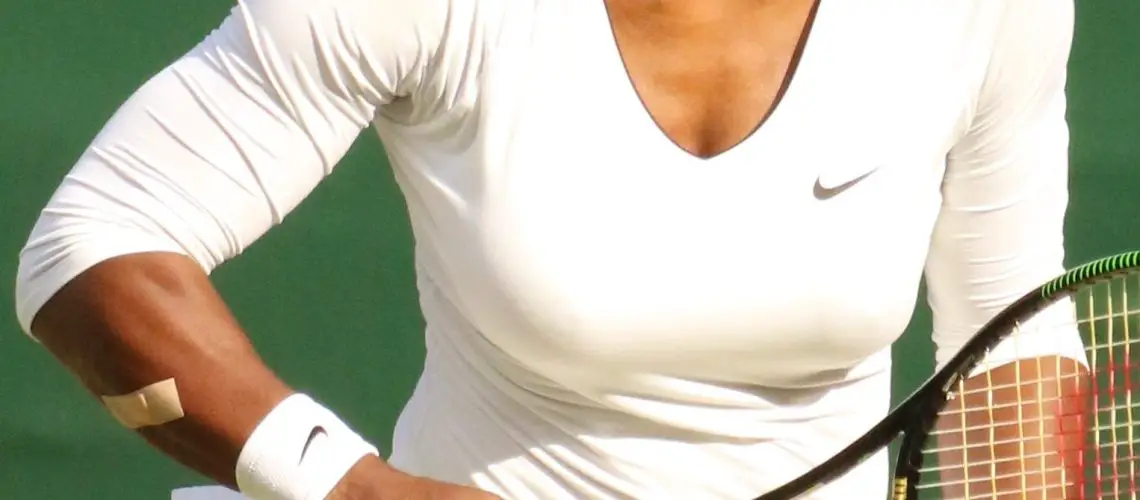We may earn money or products from the companies mentioned in this post.
How To Choose Table Tennis Racket: An Ultimate Guide

Are you looking to elevate your table tennis game? The right racket can make all the difference It’s not just about having the skills and techniques; having a suitable racket that matches your playing style can greatly improve your performance on the table With so many options available in the market, choosing the perfect table tennis racket may seem like a daunting task But fear not! In this ultimate guide, we will walk you through the factors to consider when purchasing a new racket, ensuring that you make an informed decision
The Importance of the Right Table Tennis Racket
Think of your table tennis racket as an extension of yourself on the table Just like a painter needs the right brush or a chef needs quality knives, a table tennis player needs a well-suited racket The right racket can enhance your control over the ball, improve your spin and speed, and ultimately give you an edge over your opponents
Additionally, using the wrong racket can lead to discomfort or even injuries A poorly balanced or heavy racket can strain your wrist and arm muscles, affecting your gameplay and potentially causing long-term damage Therefore, it is crucial to choose a racket that suits both your playing style and physical capabilities
Factors to Consider When Purchasing a New Racket
1 Playing Style:
Your playing style should be at the forefront of your decision-making process when selecting a new table tennis racket Are you an aggressive attacker who relies on powerful strokes? Or are you more focused on defensive play with precise placement? Identifying your playing style will help determine key features such as blade composition, rubber type, and thickness
2 Grip Type:
The grip of your racket is crucial for maintaining control and comfort during gameplay There are two main types of grips: shakehand and penhold Shakehand grip is the most common, where players hold the handle as they would when shaking hands Penhold grip involves gripping the handle between the thumb and forefinger, resembling a pen Choose a racket that accommodates your preferred grip style
3 Blade Composition:
The blade composition determines the overall feel and characteristics of your racket Blades can be made from various materials such as wood, carbon, or a combination of both Each material offers different levels of stiffness, speed, and control Consider your playing style and skill level when selecting the right blade composition for you
4 Rubber Type and Thickness:
The rubber on your racket’s surface greatly affects ball spin and speed Different rubber types offer varying degrees of tackiness, which helps generate spin on the ball Additionally, the thickness of the rubber impacts both control and power in your shots Thicker rubbers provide more power but may sacrifice some control Experiment with different combinations to find what suits you best
5 Budget:
Your budget plays a significant role in determining which table tennis racket you can afford Rackets come in a wide range of prices, from budget-friendly options for beginners to high-end professional rackets designed for advanced players Set a realistic budget that aligns with your skill level and commitment to the sport
In Conclusion
Choosing the right table tennis racket is essential for improving your performance on the table while ensuring optimal comfort and control during gameplay
By considering factors such as playing style, grip type, blade composition, rubber type and thickness, as well as staying within your budget, you can make a well-informed decision that will take your table tennis skills to new heights
Understanding the components of a table tennis racket

When it comes to table tennis, having the right equipment can make all the difference in your game One crucial component of a table tennis racket is the blade The blade serves as the foundation of the racket and determines its overall performance
The Blade
The blade is typically made from wood, carbon, or composite materials Each material offers unique characteristics that can enhance your playing style Wood blades provide excellent control and feel, while carbon blades offer increased speed and power Composite blades combine both wood and carbon elements for a balanced performance
Furthermore, there are different types of blades designed for specific play styles Offensive blades are focused on providing maximum power and speed, perfect for aggressive players who rely on strong attacking shots Defensive blades prioritize control and defensive play, allowing players to counter their opponent’s attacks effectively Lastly, all-around blades strike a balance between offense and defense, making them suitable for versatile players who enjoy a mix of both styles
In addition to materials and play styles, the handle type is another essential factor to consider when selecting a blade The most common handle types are flared, straight, or anatomic grip handles The flared handle widens at the bottom to prevent slippage during intense rallies and provides better control The straight handle offers a consistent grip throughout the entire length and suits players who prefer a traditional feel Finally, anatomic grip handles have contoured shapes that fit comfortably in hand for enhanced maneuverability
Rubbers
Another crucial part of a table tennis racket is the rubber covering on both sides of the blade known as “rubbers” These rubbers greatly influence spin generation and ball control
There are two main types of rubbers used in table tennis: inverted rubbers and pimpled rubbers Inverted rubbers have a smooth surface, allowing players to generate more spin and control the ball’s trajectory with precision Pimpled rubbers, on the other hand, come in two varieties: short pimples and long pimples Short pimples offer direct and fast shots with less spin, making them ideal for aggressive players Long pimples provide unpredictable returns with deceptive spins, perfect for defensive playstyles
Another aspect to consider when choosing rubbers is the thickness and density of the sponge beneath the rubber surface Thicker sponges generally enhance speed but sacrifice some control, while thinner sponges offer better ball feel and control at the expense of speed Sponge density also affects how much energy is transferred from your strokes to the ball, impacting both speed and spin
Assembly Options
When it comes to acquiring a table tennis racket, you have two main options: pre-assembled rackets or custom-built rackets
Pre-assembled rackets are ready-to-play setups that come with a blade and rubber already combined They are convenient for beginners or casual players who prefer not to delve into the technicalities of racket customization However, they may not offer optimal performance tailored to individual preferences or playing styles
On the other hand, custom-built rackets give players complete control over their equipment setup By selecting different blades and rubbers that suit their specific needs, players can fine-tune their racket’s performance according to their style of play This level of customization allows for greater versatility and can help maximize a player’s potential on the table
While custom-built rackets offer more flexibility, they require more research, time, and investment compared to pre-assembled options
Assessing your playing style and skill level is crucial in choosing the right table tennis equipment that suits you best Let’s dive into the different playing styles and skill levels to help you make an informed decision
Playing Styles:
1 Defensive Players: If you excel at defensive play, your focus lies in control and spin when returning shots Your goal is to frustrate your opponents with well-placed returns that are difficult to attack Look for a racket that offers excellent control and spin capabilities, allowing you to manipulate the ball’s trajectory with precision
2 Aggressive Players: As an aggressive player, speed and power are your top priorities You thrive on attacking plays, unleashing powerful shots that keep your opponents on their toes Choose a racket that emphasizes speed and power while still providing a good balance of control
3 All-Round Players: If you find yourself comfortable both in offense and defense, you fall under the all-round player category You possess a balanced playing style, adapting to different situations as needed Look for a racket that strikes a harmonious balance between offensive power and defensive control
Skill Levels:
1 Beginners: As a beginner, it’s important to start with entry-level rackets equipped with basic features that aid in learning proper technique These rackets offer forgiveness and stability, helping you build a solid foundation before advancing further
2 Intermediate Players: Once you’ve gained some experience and developed your skills, upgrading to higher-quality components becomes essential for improved performance on the table tennis court Look for rackets with better construction materials, enhanced grip technology, and superior blade composition
3 Advanced Players/Professionals: For advanced players or professionals who have honed their skills over time, customized rackets tailored to specific strengths and weaknesses are highly recommended Work closely with coaches or experts who can provide valuable insights into selecting the ideal racket specifications based on your playing style
Remember, assessing your playing style and skill level is an ongoing process As you progress and refine your techniques, it’s always a good idea to reevaluate your equipment choices to ensure they align with your current needs
Choosing the perfect table tennis racket based on your needs

When it comes to choosing the perfect table tennis racket, there are several factors to consider One of the first things you’ll want to do is set a budget for yourself Determine how much you’re willing to spend and stick to that range This will help narrow down your options and prevent you from overspending
Price ranges for pre-assembled vs custom-built rackets
If you’re looking for a more affordable option, pre-assembled rackets are a great choice These rackets come ready-to-play with a blade and rubber already attached They are often cheaper than custom-built rackets because they are mass-produced
On the other hand, if you’re willing to invest in a higher quality racket that can be tailored specifically to your playing style, then a custom-built racket might be worth considering Custom-built rackets allow you to select each component separately, including the blade and rubbers, giving you greater control over your equipment
Considerations for long-term investment in equipment
When thinking about long-term investment in table tennis equipment, it’s important to consider durability and future upgrades Pre-assembled rackets may not last as long as custom-built ones due to their lower quality components However, they can still be a good option if you’re just starting out or don’t plan on playing competitively
If you see table tennis as a long-term commitment and have plans of improving your skills over time, investing in a custom-built racket might be more beneficial These rackets often allow for future upgrades such as changing rubbers or blades, ensuring that your equipment can adapt as your game evolves
Brand recommendations

In the market today, there are numerous brands offering table tennis rackets Some of the most popular and reputable ones include Butterfly, Stiga, DHS, Yasaka, and Donic These brands have established themselves as leaders in the industry and consistently produce high-quality rackets that cater to players of all levels
Trusted sources for purchasing rackets
When it comes to purchasing your table tennis racket, it’s important to buy from trusted sources Online retailers such as Amazon and Tabletennis11 are reliable options that offer a wide range of rackets from different brands Additionally, local specialty sports stores or table tennis clubs may also carry a selection of rackets for you to try out in person before making your purchase
Testing and finalizing your choice

Once you’ve narrowed down your options based on budget, brand preferences, and trusted sources, it’s time to test out different racket configurations Many stores or clubs offer trial periods where you can borrow or rent rackets for a specific period of time
During this trial period, take the opportunity to play with various racket combinations Experiment with different blade thicknesses and rubbers with varying levels of speed, spin, and control This will help you determine which configuration feels most comfortable and suits your playing style
In addition to personal testing, don’t hesitate to seek advice from coaches or experienced players They can provide valuable insights and recommendations based on their own experiences
Ultimately, making the final decision on your table tennis racket should be based on comfort, performance on the table, and personal preferences Remember that finding the perfect racket is a journey that requires patience and experimentation – so enjoy the process!
Conclusion

In conclusion, choosing a table tennis racket requires careful consideration of several key factors By understanding the importance of blade construction, rubber types, grip styles, and weight balance, players can make an informed decision that suits their playing style and preferences
Summary of Key Factors
The blade construction is crucial in determining the overall performance of a table tennis racket Players should consider factors such as speed, control, and flexibility when selecting a blade that complements their playing style
The type of rubber used on the racket’s surface also plays a significant role Different rubbers offer varying levels of spin and control, allowing players to tailor their shots to suit their game plan
Grip style is another essential aspect to consider when choosing a table tennis racket The grip influences how comfortable and secure the racket feels in the player’s hand, ultimately affecting their ability to execute precise shots with ease
Weight balance is yet another factor that should not be overlooked A well-balanced racket ensures optimal maneuverability and stability during gameplay, enabling players to maintain consistency in their strokes
Encouragement to Experiment
While understanding these key factors is important as a starting point, it’s crucial for players to experiment with different rackets to find the perfect fit for their individual play styles Each player has unique strengths and weaknesses that may require specific characteristics in a racket
Trying out different combinations of blades, rubbers, grips, and weight balances allows players to discover what works best for them It may take time and patience but persisting in this process will lead to finding the ideal table tennis racket that enhances one’s gameplay
Remember that no two players are exactly alike; therefore, there is no one-size-fits-all solution when it comes to table tennis rackets Embrace the journey of exploration and experimentation, and enjoy the process of finding the perfect racket that will elevate your game to new heights
Useful Links

Table Tennis Racket Buying Guide: What to Look for and …
The Complete Guide To Choosing A Table Tennis Blade
Which Blade Handle? – Table Tennis Blog
Guide to Choosing a Table Tennis Blade
How to choose a Table Tennis Bat
Table tennis rackets for beginners: Affordable picks for you
How to Choose a Table Tennis Racket? (Blade and …
How to Choose a Ping Pong Racket – Smash Table Tennis
Table tennis racket
Parts of a table tennis racket
How to Choose Your Table Tennis Bat?
How To Choose Your First Table Tennis Bat
How Do I Choose The Right Ping Pong Paddle For My …
Best Table Tennis Bats (for Beginners & Intermediate …
Collection: PRO SPECIAL PADDLES
The 11 Best Ping Pong Paddles in 2023 | PingPongRuler
Ping Pong Paddles | Table Tennis Rackets | Bundled Sets






